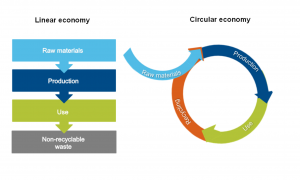With global attention on Glasgow this autumn, we look at what construction professionals can expect from the COP26 international summit of 2021
An introduction to COP26
COP26, the 26th annual Conference of the Parties, is an international UN summit with over 190 attendees collaborating to combat climate change. The UK, being this year’s conference host, aims to continue working to stay within the 1.5-degree global warming threshold through enormous reductions of greenhouse gas emissions and transitioning to a low carbon economy.
Pursuing the success previously achieved at the COP21 2015 summit – responsible for the formation of the momentous Paris Climate Accord – COP26 focuses this year on putting the targets set in 2015 into action. However, like many summits prior to COP26, this feat has proven difficult as a collaborative effort, with the NDC (Nationally Determined Contributions) 2030 target fast approaching.
Amongst numerous topics of debate, the summit spotlights the built environment and climate impact in the construction sector. A focus, in particular, being the ‘Building to COP26’ forum: a largescale sector effort for developing zero carbon emission buildings, to be both energy efficient and resilient, optimistically by 2030. This conference includes full building decarbonisation targets, collaboration between sector stakeholders and government, and full policies and implementation measures into NDC agreements.
With the UKGBC, the UK’s Green Building Council, being a participant in the summit, greater attention has been paid to the construction industry as a contributor of emissions amidst the climate impact. This year’s conference will include an entire day dedicated to the built environment in the second week of the summit on November 11, titled ‘The Cities, Regions & Built Environment Day’.

What are the goals of the summit?
-
Secure global net zero by mid-century and keep 1.5 degrees within reach
Where countries are being asked to create emissions targets for the year 2030, certain requirements will need to be met to secure 1.5 degrees in the future. Participating countries will need to reduce specific carbon-producing practices like coal usage, mass deforestation, manufacturing and using petrol and diesel vehicles and transport, and switch to investment in greener practices like renewable energy.
Net zero emissions will require extreme existential changes from numerous industries and factors, such as oil industries and the built environment.
2. Adapt to protect communities and natural habitats
With the effects of climate change already materialising, natural habitat destruction is becoming more and more irreversible. As well as habitats, communities will also face elimination when located in climate-vulnerable areas, such as coastal regions.
To reverse these effects, countries must make efforts to protect and restore ecosystems, as well as build operational defences, warning systems and resilient infrastructure to protect homes, buildings, and people. This goal also focuses on reinvesting into natural regeneration of habitats and natural weather barriers to protect from future climate catastrophes.
3. Mobilise finance
To deliver on the first two goals, developed countries must take further action on their agreements to mobilise their promised climate finance targets. Having already missed the mark on the $100bn promised by 2020, COP26 will need to double down on agreed funders in their climate finance plans.
International financial institutions must contribute more and work towards releasing the trillions in private and public sector finance required to secure global net zero.
4. Work together to deliver
Tackling the climate crisis will require the largest collaboration of humanity. By continuing to host COP summits, countries must prioritise action over promises and mutually agree on decisions before targets expire, as many of the climate finance targets already have.
This involves finalising on the Paris Rulebook, making the Paris Agreement operational, and proceeding to make physical progress through collaboration between governments, businesses, and civil society. This also requires greater and more active leadership who follow through on their promises.
What has the UK done already before this summit?
The UK has had success with passing climate change policy nationally in previous years, incorporating a growing economy of 78% while decreasing emissions by 44%, the fastest decline of any of the nations in the G7. Additionally, the UK has also decarbonised its economy faster than any other country in the G20 international forum since 2000.
Along with successfully setting laws in pursuit of net zero carbon emissions by 2050, some other accomplishments the UK has achieved have been:
- Announcing plans putting farmers at the forefront of reversing environmental degradation and tackling climate change
- Ending government financial support for the fossil fuel energy sector overseas
- Doubling international climate finance for developing nations with over £11 bn over the next five years
- Announcing the end of the sale of new petrol and diesel cars in the UK by 2030, putting the UK on course to be the fastest G7 country to decarbonise cars and vans
- Spending at least £3bn of their international climate finance in the next 5 years on nature-based solutions
- Making climate-related disclosures mandatory across the economy by 2025, with most requirements coming in by 2023
- Growing the low carbon sector by providing over 460,000 jobs in the UK, as well as aiming for up to 2 million green jobs nationally by 2030
- Planting trees on 30,000 hectares of land per year by 2025
- Becoming the largest producer of offshore wind energy in the world.
More specifically to the construction industry and the built environment, the UK has managed to decrease its carbon footprint despite the urban environment and population growing consistently since 1990. This decline in emissions can be attributed to the decarbonisation of grid electricity nationally, as well as the lessening insulation installation rates between 2008 and 2012.
Insulation and heating collectively impact Britain’s carbon footprint. Heating results in around 10% of the nation’s emissions, with existing buildings we can only lessen this quantity by decarbonising the heat supply, which is a policy already in motion in government.
The UK is already a member and participant in the UN Sustainable Development Goals (SDGs), where goal 11 of the charter focuses on building and environmentally modernising sustainable cities and communities. This creates policies for the environment at a whole-system level, which is beneficial to protect, sustainably manage and restore ecosystems, while improving urban infrastructure to reduce waste and carbon output. Signing this accord will also hold the UK responsible for achieving its set targets.
Additional to these approaches, the UK government’s 2018 resources and waste strategy focuses on moving towards a circular economy, which will contribute greatly to sustainably reducing the environmental impacts of urban areas. A circular economy, contrasting from our current linear economy, would regenerate materials and resources, making use of resources to maximise their value without simply disposing of them after a singular use.
This system maximises energy efficiency while reducing the need for waste management. A circular economy is essential to a low-carbon economy, reducing resource consumption and disposal, recycling materials, eliminating avoidable waste, and makes for a good model for other systems such as food disposal or water management too.
COP’s greener future for the built environment
Globally, buildings are accountable for 40% of carbon emissions, and 50% of all extracted materials. With an ever-growing urban environment, 70% of the global population is predicted to reside in these areas by 2050. This unfortunately exposes the forecasted 1.6 billion urban residents to rising sea levels and extremely high temperatures with potential weather vulnerabilities.
Roland Hunziker, director of sustainable buildings and cities at the WBSCD, described built-environment emissions as “the sleeping giant”.

The built environment’s demand on natural resources not only upsurges carbon emissions, but the higher densities of population moving into urban areas increases amounts of waste, air, water, and land pollution too. As cities utilise about 60-80% of the world’s energy consumption, global material usage is expected to double by 2050 and a third of this incline is from all the materials used in the construction industry.
To stick to the limit warming to no more than 1.5℃ as set out in the Paris Agreement, emissions from building projects globally need to be halved by 2030. To reach net zero emissions for all buildings by no later than 2050, countries need to begin investing in energy efficient buildings and construction.
Luckily, energy efficient buildings are one of the biggest investment opportunities, worth an estimated USD $24.7tn by 2030. Unfortunately, however, under USD $3 of every $100 spent on new construction goes to these efficient buildings. With few countries in the UN sharing NDCs to the climate summit framework, we can see that many governments are not including full building decarbonisation objectives or the means to minimise their building material wastage.
Numerous initiatives working on the built environment are being introduced to this year’s summit, including:
#BuildingtoCOP26
The #BuildtoCOP26 Coalition, created by the World Business Council for Sustainable Development (WBCSD) and the World Green Building Council (WorldGBC), will promote essential collaboration across the global built environment system, prioritising action, solutions and policy foundations across businesses, cities, and governments. Their aims include:
- Stakeholders in the construction business to unite in shared goals: to halve the built environments emissions by 2030 and have net-zero carbon buildings in operation, with leading projects achieving at least 50% reductions in embodied carbon. (UNFCCC Human Settlements Pathway)
As well as these decarbonisation targets, building resilience into the transformation of the built environment is essential when supporting urban populations and climate-vulnerable communities (UNFCCC Resilience Pathway).
- All countries to include full building sector decarbonization targets, concrete policies and measures and related implementation mechanisms in their NDCs.
GlobalABC is working with its country members and beyond on a country commitment, the Buildings as Critical Climate Solution (BCCS) that will advance building sector measures at the national level, creating a supportive environment toward a zero-emission, efficient and resilient construction system.
- To have at least 1,000 cities and 20% of the largest built environment businesses by revenue committed to the UN’s Race to Zero. Cities are also encouraged to participate in the Cities Race to Zero, to contribute to decarbonisation targets at a local level.
Hunziker said: “To overcome the fragmentation of efforts, the built environment needs a strong vision and aligned action by all stakeholders, from business, finance and policy. That’s why the BuildingToCOP26 Coalition is so important, and WBCSD is taking a leading role in it.
“Together with our members, we are committed to driving the change to net zero, healthy and inclusive living spaces that thrive in harmony with nature. Apart from a shared vision, we also need systems thinking and a focus on reinvention, resilience, and regeneration to transform the built environment in the decade ahead.
“Business leadership across these areas will drive the action required to realize WBCSD’s vision of 9+ billion people living well within planetary boundaries.”
Race to Zero campaign
While rallying a coalition of net-zero representatives, the Race to Zero campaign hosts 120 countries, 733 cities, 3,067 businesses, 173 of the biggest investors and 622 higher education institutions. These actors contribute to the largest ever alliance committed to achieving net zero carbon emissions by 2050.
Race to Zero’s primary objective is to build momentum to shifting to a decarbonized economy globally, encouraging governments to strengthen their contributions to the Paris Climate Agreement. Parallel to reinforcing these contributions, this campaign joins cities, regions, and businesses to the conversation of the Paris Agreement ensuring a more inclusive and resilient economy.
Nigel Topping, UN high-level climate champions for COP26, said: “We can’t win the Race to Zero without winning the Race to Resilience as well. Climate breakdown and the pandemic multiply inequalities — social, environmental, and economic gaps are widening across nations and across the Global North and South.
“By 2030, we must catalyse action by non-state actors that builds the resilience of four billion people from groups and communities who are vulnerable to climate risks.”
COP26 Cities, Regions and Built Environment Day
The World Green Building Council, UN High-Level Climate Champions, in collaboration with the COP26 presidency, the UK’s Department for Business, and Energy and Industrial Strategy (BEIS), have rallied to the COP president for a day to promote awareness and collaboration between member states and stakeholders in the built environment.
Cristina Gamboa, CEO of the World Green Building Council stated: “It is essential to have a full day to recognise the building and construction industry at COP26. The sector accounts for nearly 40% of global energy and process-related emissions, up to 10% of global employment and around 50% of global wealth. Despite this, our sector often remains a blind spot in global climate negotiations.
“WorldGBC has signed a letter to COP26 President, Alok Sharma, together with nine fellow international organisations which are working to decarbonise and make more sustainable the built environment across the world. We look forward to his reply and discussing how we can work together to make COP26 the success it needs to be.”
Climate Commitment Platform
This campaign’s objective is to spotlight the climate commitments made by companies, highlighting their achievements and approaches to energy efficiency in the built environment industry, working towards net zero emissions. In the lead up to COP26, this platform profiles member companies aiming to share knowledge, ambition and action across this global sector.
With 42 company commitment listings on their platform, along with plentiful other voluntary commitments, CCP’s Climate Leadership Model draws businesses into collaborating with governments, working on three main categories in their individual companies:
- Direct Control – emissions from a company’s own operations (scope 1 and 2 emissions).
- Value Chain – emissions outside of a company’s direct control, however which it has the ability to influence (scope 3 emissions).
- Advocacy & Influence – key activities that a company should undertake to stimulate wider market transformation and system change.
Is net zero emissions an achievable target?
Though the climate emergency is no new incidence, prior goals set to keep global temperatures at a low of 1.5 degrees by the end of this decade appear somewhat unattainable. Individual contributions made by member states are crucial to this goal, yet internal deep transformation is needed to combat the climate crisis as seen with the built environment and other vast carbon-producing industries.
‘The world is currently not on track to limit global warming to 1.5 degrees’
The Paris Agreement set the emission reduction objectives in 2015, but years later NDC implementation remains in the discussion stages. NDC emission reduction targets have now been updated in 2020 after the end of their five-year cycles. Due to their incompletion, countries attending COP26 are expected to update their 2030 targets before arriving in Glasgow.
It is especially important that developed countries and the largest emitters, particularly the G20, accept responsibility and push targets further this year.
In the spirit of action speaking louder than words, this year’s COP26 summit must finally settle discourse and lay down international law to set appropriate and achievable targets.
Eskarina Handley
Twitter: @Esk_PBCToday


















